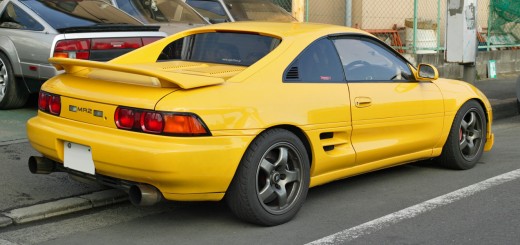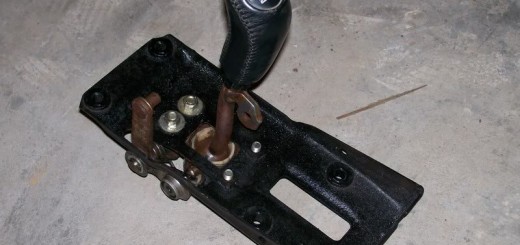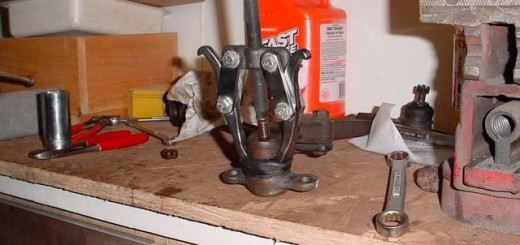Modifying your 5S-FE
There are a lot of nay-sayers out there that say the 5S-FE motor is a weak non-performance economy motor and can’t handle the boost. I don’t agree with this assumption and feel that many setups are not so much limited by the motor itself but by their owner’s understanding of how it works. The 5S-FE like any other motor has it weaknesses and strengths but overall is a very sturdy platform for modification. When planning modifications to a motor, I believe it should be thought of as a series of obstacles to be overcome. As you remove one big obstacle you find yourself facing another one but in general the overall system will become more efficient. In addition, upgrading one component can overstress another that was within it’s operating limits before the upgrade. To safely build a performance motor you need to understand what the limits of your motor are so you can know how far to push the envelope and what components need to work together to get the desired result. Here are some of the limits of the 5S-FE platform as I see them.
Basic Strengths of the 5sfe:
– Solid block – High powered 500+rwhp MR2s often use these blocks.
– Stroked crank – The 5S-FE is a stroker motor from the factory. Also used in 500+rwhp MR2s.
– Displacement – 2.164 liters which is great for spooling a turbo.
– Long intake runners – Although not as good for high revs this gives the air more velocty at low RPMs for torque down low.
– 9.5:1 compression – Good for NA power and low boost power but lowers the maximum boost you can safely run.
– Fuel rail – The fuel rail on the 5S-FE is a top feed rail which is capable of supporting 850cc injectors, maybe larger
Limitations:
– 6300rpm redline – Valve springs and connecting rod bolts are not strong enough to be reliable past this.
– Short duration cams – ~220? and 8mm lift. The 3S-GTE has 236 advertised duration and 8.5mm lift.
– Small valves – 32.5mm intake and 28mm exhaust. The 3S-GTE has 33.5mm and 29mm exhaust.
– Linked intake and exhaust cams – There is a drive gear that keeps them synced so an adjustable cam gear can only be put on the intake cam and it also effects the exhaust.
– Fuel pump – Only good to ~235rwhp at stock pressure.
– 5S-FE Computer – Runs a little rich and is made for the stock NA injectors.
– Injectors – Made for max 150rwhp maybe less. 91-92 injectors are 205cc (yellow) and 93+ are 225cc (Dark green) from what I have read.
– Intake manifold – I don’t know the limits of the 5S-FE intake manifold but most people shooting for high power replace it with a custom one. If you are looking for power in a higher RPM range you will want to replace this with one that has shorter, wider runners.
– Throttlebody – I also don’t know the limits of the stock throttlebody but it is only 2″ in diameter which is a little small. If you need to move a lot more air then stock you will want something begger
What can you expect from your turbo 5S-FE?
A stock 5S-FE in good condition will easily handle boost of up to 9-10psi with as much as 180rwhp. An MR2 with a 5S-FTE is an absolute blast to drive and is a little faster then a stock turbo MR2. There is a missconception that the S54 transmision in the NA MR2 has shorter gears then an E153 turbo transmission. It is partially true but only the 4th and 5th gears are shorter. 1st through 3rd are almost identical when factoring in final drive gears. So why is a 5S-FTE MR2 faster? Because the turbo spools faster, the compression is higher and it’s a bigger engine. 
A simple, bare minimum setup for a 5S-FTE includes the following:
Turbo Components
– Factory 3s-gte Turbo CT26 with wastegate actuator
– Factory 3s-gte Elbow and Primary Catalytic converter
– Factory 3s-gte Exhaust Manifold
– Factory 3s-gte Intercooler w/ fan
– Factory 3s-gte Oil Pan
– Factory 3s-gte Oil/Water Coolant Lines to and from Turbo w/oil drain hose and clamps
– Factory 3s-gte turbo to intercooler Pipe
– Custom intercooler to throttlebody pipe (mine is 2.5″ diameter)
– Factory 3s-gte Blow Off Valve with the VTV valve
– 4 MkIII Supra NA 315cc Injectors (light green top) part # 23250-70080
– 4 NGK BKR6E or BKR7E Spark Plugs (BKR7E is the colder plug for higher boost)
– Factory 3s-gte 2bar MAP Sensor part # 89420-17030
– 30 amp relay for intercooler fan
– Boost Gauge
– MSD-BTM # 5462
– MSD Tach Adapter #8910eis
– Oil and water send/return fitings (Many other ways possible or you can use JIC fittings)
Oil
– 1/8 BSPT to 1/8 NPT male to male (For the oil feed at the head)
– 1/8 NPT female T or plus
– 1/8 NPT to 3/8 barbed hose
– 1/8 NPT to female 1/8 BSPT (To keep your oil preasure sender)
Water
– Coolant Gooseneck from a 91 NA MR2 (The 91-92 has a removable plug while the 93+ does not)
– M16x1.5 to 3/8 NPT (For the water return by the thermistat. I had to buy a M16x1.5 to 1/8, drill and tap it to 3/8)
– 3/8 male BSPT to 3/8 female NPT (For the water send at the coolant gooseneck.)
– 2 x 3/8 NPT to 3/8 hose barb 90 degree bends (The bends allow you to point the hose away from the downpipe or other obstacles.)
– 6 – 3/8″ hose clamps for oil and water lines
– Misc nuts and bolts for the turbo and manifold if you are missing any
– gaskets – Turbo to downpipe and exhaust manifold
– Misc Hoses and clamps
Hoses
– 12″long by 2″diam hose (IC pipe to IC)
– 2″diam coupler (Turbo to IC pipe)
– 2 to 2.5″diam transition coupler (IC to TB pipe)
– 2.5″diam coupler (TB pipe to TB)
Clamps
– 2 x 2.25″ clamps
– 3 x 2.5″ clamps
– 3 x 2.75″ clamps
– 4 feet of 3/8″ oil/coolant hose
– 10 feet 5/32″ vacuum hose
– 18 gauge wire and crimp connectors
– 2-1/8″ exhaust pipe coupler and two pipe clamps to join the down pipe to the NA exhaust if you cut your NA exhaust to fit
– Zip ties and misc hose clamps to secure vacuum lines under boost.
Upgrades from the basic 5S-FTE could include:
– KO or other Downpipe
– Turbo exhaust system
– Boost Controller
– EGT Gauge
– Air/Fuel Ratio Guage (Modify for WOT reading from www.gadgetseller.com)
– Oil Pressure Gauge
– Oil Temp Gauge
– Pilar pod and/or steering column pod
– SPAL intercooler pull fan
– Silicon hoses for turbo/IC pipes
– T-Bolt clamps instead of screw type clamps
– SAFC with ajustable FPR for fuel tuning (Requires spending time on a dyno)
– J&S Safeguard instead of MSD-BTM
– SMT6 instead of MSD-BTM/SAFC (Requires spending time on a dyno)
– CT-20b or larger turbo. (Be very careful here. 9psi on a CT-26 is not the same as 9psi on a TD06. You’ll need more fuel per pound of boost with a bigger turbo and you will get more power at lower boost. The stock fuel maps may not match up very well to the VE curve of your motor with a larger turbo on it.)
Many people ask if they can substitute different injectors or MAP sensors. The answer is yes but you will require some advanced way to tune your WOT fuel maps and it will get a whole lot more expensive. Call it the magic square of the 5S-FTE: 5S-FE Computer, 315cc injectors, ct-26 and 2 bar stock turbo MAP sensor. It’s a balanced equation and anything else can throw it off. The combination of CT-26, turbo MAP sensor, stock fuel pump, 315cc injectors and 5S-FE computer is only good up to about 9-10psi of boost. At this point the injectors are probably over 90% duty cycle. With some kind of fuel tuning or an AFPR you could possibly go higher but be careful, use a wideband and take slow steps up. If you go too lean you risk detonation and damaging your engine.
Something else that is nessesary to keep your motor safe is a device to retard timing according to boost level. You need this because you are tricking the stock ECU into thinking that less air is going into the engine and it advances timing past what is safe at boost. I chose to use the MSD-BTM and Tach Adapter because it was the most economical solution. A J&S Safeguard or SMT6 or SMT7 will also work but are more expensive with more features. Most people have it set to retard 1/5 to 1/2 degree per pound of boost. If you have a 93+ 5S-FE it will also have a knock sensor which is an added level of safety.
If 10psi and 180rwhp aren’t enough for you then there is still hope. Toyota only planned for the 5S-FE to have 135hp at the crank but it is still the sister engine of the 3S-GTE and in some ways, as I mentioned above, the stronger of the two. All of the weaknesses of the 5S-FE can be overcome but not all of the solutions are cheap.
Here are some of the limits and what you can do to get past them:
– Cams – Webcams and others make cams that will increase duration and lift. Webcam grinds of 294, 577 and 101 should increase performance and still be streetable. Welded cams like Webcams are easier to fit then cams that are only ground because the base circle is kept the same so stock shims can be used. Also they will be able to create a more aggresive profile then on a ground cam. You will need an EMS to idle really aggressive cams like 256 degree and above. Remember that cams shift your torque curve to the right so buy cams to suite where you want your torque peak. An bad example would be buying 306 degree cams. They would be almost useless in a motor that has a 6300rpm redline.  Also high lift or ground cams may require underbucket shims or shimless buckets to keep the shims from popping out and keep in mind that valve springs have a point at which they coil bind. I found the stock 93 springs to bind at about .360″. Just FYI the difference between 91-92 cams and 93+ cams is the diameter of the base circle and the width of the lobes (smaller base circle on the 91-92 with narrower lobes). Otherwise they would be interchangable.
Also high lift or ground cams may require underbucket shims or shimless buckets to keep the shims from popping out and keep in mind that valve springs have a point at which they coil bind. I found the stock 93 springs to bind at about .360″. Just FYI the difference between 91-92 cams and 93+ cams is the diameter of the base circle and the width of the lobes (smaller base circle on the 91-92 with narrower lobes). Otherwise they would be interchangable.
– Valves – 1mm or 2mm oversized valves will do wonders for volumeteric efficiency. 2mm oversized valves will require larger seats, porting and deshrouding of the combustion chamber. Use valves from a 3S-GTE for 91-92 5S-FE and valves from a 2JZ-GTE for the 93+ 5S-FE for 1mm oversized. The +1mm version of these valves will be +2mm in a 5S-FE.
– Ports – Port matching and cleaning up the intake and exhaust ports will improve VE and may be required to see gains from oversized valves. When porting you will always get the best results from a shop that can flow test the head. Many people recommend Chris Katthage of Engine Logics because he deals almost exclusively in MR2 performance motors and will document gains in flow when doing head work.
– Fuel Pump – Good to 235rwhp with stock pressure. Replace with a Walbro 255lph or supra pump if you want more.
– 5S-FE Computer – Runs rich and fires the injectors in batches. Also it can’t idle a set of aggressive cams because of reversion . Replace with a standalone or add an advanced piggyback. An SMT6 or SMT7 will allow you to get past your fuel and timing issues but still has limits. Personally I would go with stand alone ECU because it will remove all the limitations of the 5S-FE ECU.
– Injectors – With a standalone or advanced piggyback and a big fuel pump you can run much larger injectors. They may have to be custom though because top feed injectors are not as common as the side feed injectors found on the 3S-GTE.
– 6300rpm redline – To safely go above this you need upgraded valve springs (3S-GTE springs for 91/92 or 2JZ-GTE springs for 93+), forged or 3S-GTE rods because they will have bigger bolts (3S-GTE and 5S-FE rods are almost identical except for the rod bolts) and a stand alone computer to raise the rev limiter. 3S-GTE rods can be made to fit by grinding the crank journals down but they are also a few thousandths shorter then the 5S-FE rods so that can slightly lower compression.
– Compression – Custom Forged pistons can be installed for just about any compression ratio. Remember that overboring and oversized valves can change your compression ratio. For high boost you may want to shoot for 9.0:1 or less. Aggressive cams can also let you run higher compression and higher boost because with teh right tuning they reduce the propensity for detonation.
– Cam Gears – An adjustable intake cam gear can be made from a 2JZ-GTE adjustable cam gear with the center machined to fit. As for the exhaust, it will move with the intake in the same direction. This is probably the hardest limit to get past on a 5S-FE but it may be possible with some custom machine work to one of the internal cam gears to make it adjustable (Future project?).
– Intake Manifold – Just like any stock manifold there is only so much air that can flow through it and choosing the correct runner length and plenum volume in a custom manifold can add some extra velocity at different rpms. Most of the custom manifolds I have seen for the 5S-FE are side feed to keep air flow as even as possible between the cylinders and have shorter runners then stock to increase velocity at higher RPMs.
– Throttlebody – You could use a 4A-GZE or Mustang throttlebody to get a bigger bore and get more air flow. This requires a custom intake manifold and possibly some custom work for the TPS and IAC. With a stand alone this should be easier to get working.
– Oil Pump – Replace with a 98 5S-FE pump and shim the relief valve 1-1.5mm to get a higher pressure. If you do this you may have to put a restrictor on your turbo oil feed line to keep from blowing oil past your seals. You might need to do that anyway if you find oil pushing past the turbo oil seals.
This documentation in no way replaces the Toyota MR2 Repair Manuals. The purpose of this content is only to provide supplementary information to fellow MR2 enthusiasts. Midship Runabout and its contributing authors will not be held responsible for any injury or damages that may occur as the result of practicing any of the methods or procedures described within this website. Article and photo submissions are property of the contributing author.



So for the hoses section is it referring to the intercooler piping? Thank you.
Also should I install a head gasket spacer to lower compression? Thank you.